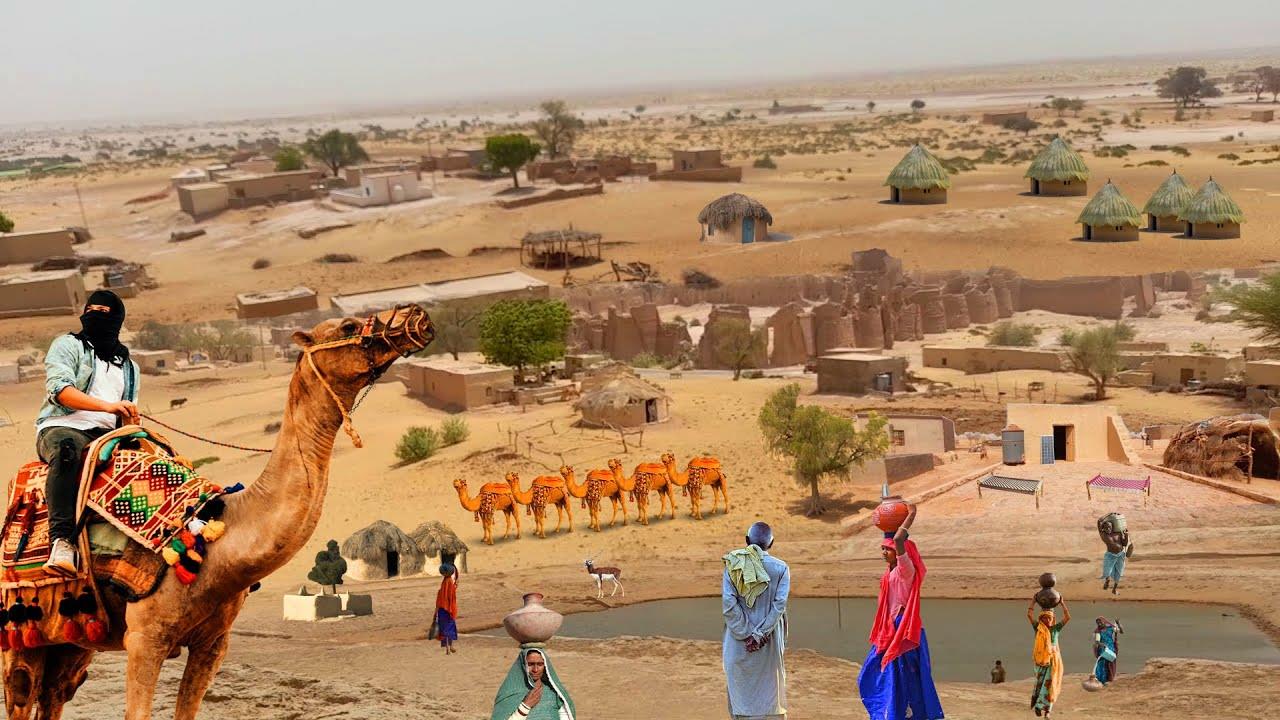
Cholistan's Cry For Survival
In Pakistan's western Thar Desert, Cholistan stands as a stark reminder of environmental challenges and socio-economic struggles. Once a vital part of the ancient Indus Valley Civilization, this arid region now grapples with environmental decline and limited development. The Hakra River, which sustained life in this area for thousands of years, disappeared 166 years ago due to the construction of the Ottu Weir by the East India Company. Today, its dry riverbed stretches over 100 kilometers, symbolizing environmental transformation. This change has left approximately 1.2 million residents, mainly nomadic pastoralists, in a daily struggle for survival.
The region's persistent drought underscores the urgent need for water management reforms. In May alone, over 50 livestock deaths were reported-a critical loss for pastoralist communities reliant on cattle for their livelihood. Water shortages in Cholistan highlight the pressing challenges of sustainable resource management. As one of the world's most water-stressed countries, Pakistan faces significant agricultural and food security risks, compounded by a projected 38% water shortage from the Indus River System Authority.
The Punjab government's recent development initiatives aim to convert 1.2 million acres into farmland, potentially reshaping the region's socio-economic landscape. However, concerns remain about equitable resource distribution. Indigenous Rohilla communities have expressed worries about being marginalized as agricultural expansion progresses. Environmental experts warn of potential ecological consequences such as soil salinization and aquifer depletion, emphasizing the need for sustainable agricultural practices.
Cholistan's challenges extend beyond environmental concerns to social and economic development. Community-driven water management systems, if supported by modern technologies such as solar-powered Riverbank Filtration systems, could enhance water availability. Drought-resistant crops like millet and guar offer promising agricultural alternatives, aligning with both environmental sustainability and economic viability.
The human and ecological heritage of Cholistan is significant. The region hosts unique wildlife such as the Chinkara gazelle, Brela camel, and migratory birds. Additionally, over 400 archaeological sites linked to the Indus Valley Civilization hold immense historical value. Protecting these cultural and ecological assets requires a balanced approach that integrates conservation with development.
Pakistan's broader development trajectory reflects similar patterns of underinvestment and regional disparities. Provinces like Balochistan, Khyber Pakhtunkhwa, and Gilgit-Baltistan face socio-economic challenges despite their rich natural resources and strategic importance. Addressing these disparities requires inclusive national policies that prioritize equitable development and infrastructure investment.
Cholistan's story is ultimately about resilience and the potential for sustainable development. With community-centered policies, modern water management techniques, and an emphasis on preserving its unique heritage, the region could transform into a model of environmental sustainability and socio-economic progress. Cholistan's future rests on a commitment to development that respects both human dignity and ecological balance.
ShareFacebook Twitter WhatsApp Email Print Telegram
Legal Disclaimer:
MENAFN provides the information “as is” without warranty of any kind. We do not accept any responsibility or liability for the accuracy, content, images, videos, licenses, completeness, legality, or reliability of the information contained in this article. If you have any complaints or copyright issues related to this article, kindly contact the provider above.






















Comments
No comment